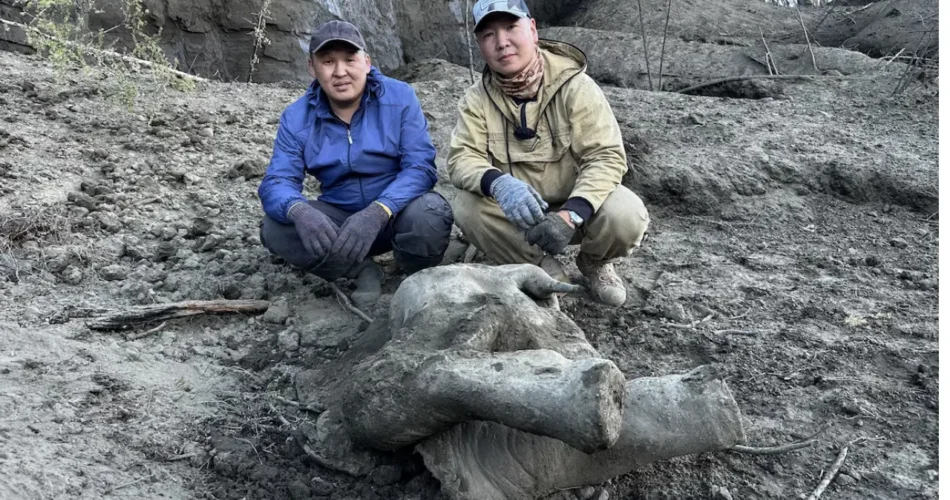A remarkably well-preserved sabertooth cat cub has emerged from Siberia’s permafrost, offering scientists an unprecedented look into the past. According to New Scientist, the remains, discovered in 2020 by ivory hunters along the Badyarikha River, belong to Homotherium latidens, a species of scimitar-toothed cat. This is the first specimen of its kind to be analyzed in such detail, revealing unique anatomical features unseen in modern wildlife. Alexey Lopatin of the Borissiak Paleontological Institute in Moscow called the discovery a “fantastic sensation,” emphasizing its significance in understanding extinct mammals.
A Glimpse Into Prehistoric Life
The cub, which died approximately 37,000 years ago, is remarkably intact, with preserved features including its head, front legs, chest, and even whisker remnants. This exceptional state of preservation has allowed researchers to identify adaptations such as an unusually large upper lip and broad paws, possibly suited for traversing snow-covered landscapes. Its brown fur, notably devoid of spots or stripes common in modern feline cubs, has intrigued scientists as they analyze its role in Ice Age ecosystems.
This discovery adds to a growing list of recent finds, marking what experts call a “second golden age” of permafrost mummy research. Over the past 15 years, the thawing permafrost has yielded an extraordinary number of Ice Age animal mummies, thanks in part to increased ivory hunting in Siberia and gold mining in Canada’s Yukon. These commercial activities, while driven by economic interests, have inadvertently exposed frozen remains that would have otherwise remained hidden.
A New Era of Ice Age Discoveries
The Homotherium latidens cub joins a prestigious list of mummified predators, including gray wolves and cave lions. The first such find, a 12,500-year-old “Tumat wolf” pup, was unearthed in 2011. Since then, discoveries have included an intact adult wolf head and cave lion cubs like Dina and Uyan, estimated to be 30,000 years old. These specimens have greatly expanded scientific understanding of Pleistocene fauna, a period spanning from 2.58 million to 11,700 years ago.
The fascination with permafrost mummies is centuries old. As early as the 17th century, Siberian locals reported large, frozen animal remains emerging from riverbanks, often surrounded by superstition. In 1722, Peter the Great ordered the collection of mammoth remains for display in his Kunstkamera museum in St. Petersburg. However, the inaccessibility of these remote regions hindered systematic study for centuries.
One of the first scientifically documented finds was the Berezovka mammoth in 1900, whose remains, complete with undigested vegetation in its mouth, suggested a sudden death, possibly due to suffocation. Throughout the 20th century, discoveries like the baby mammoth Dima (1977) and the steppe bison Blue Babe (1979) provided further insights. However, many remains were lost due to a lack of scientific interest or logistical challenges.
The Frozen Landscape of the Pleistocene
During the Ice Age, much of the Northern Hemisphere was covered by a vast cold grassland known as the mammoth steppe, stretching from Siberia to Yukon. This frigid ecosystem supported megafauna like woolly mammoths, woolly rhinoceroses, and steppe bison, alongside formidable predators like cave lions, wolves, and scimitar-toothed cats. According to New Scientist, the region’s extreme conditions played a crucial role in preserving many of these animals, which were quickly frozen in ice or mud after death.
Permafrost mummies offer insights that traditional fossils cannot. For instance, woolly mammoths have revealed distinctive adaptations to the cold, such as a trunk bulge and smaller ears. These discoveries have even fueled de-extinction efforts by companies like Colossal Biosciences, which aims to resurrect the woolly mammoth using ancient DNA.
What Lies Ahead?
Despite recent breakthroughs, researchers believe many Ice Age species, including cave bears and the giant rhino Elasmotherium, remain undiscovered. Some experts speculate that human mummies may also exist within the permafrost, though cultural taboos could be preventing locals from reporting such finds.
The Homotherium latidens cub represents a milestone, not only for its remarkable preservation but also for its insights into Ice Age predator adaptations. As Lopatin noted, “The muscles, skin, and fur of this mummy are well-preserved,” allowing scientists to reconstruct how these ancient cats lived and hunted.
With ongoing permafrost research, each discovery brings new pieces to the puzzle of Earth’s prehistoric past. These frozen time capsules not only help scientists understand extinct species but also provide clues about climate change, extinction events, and evolutionary adaptations—making them invaluable treasures of natural history.

